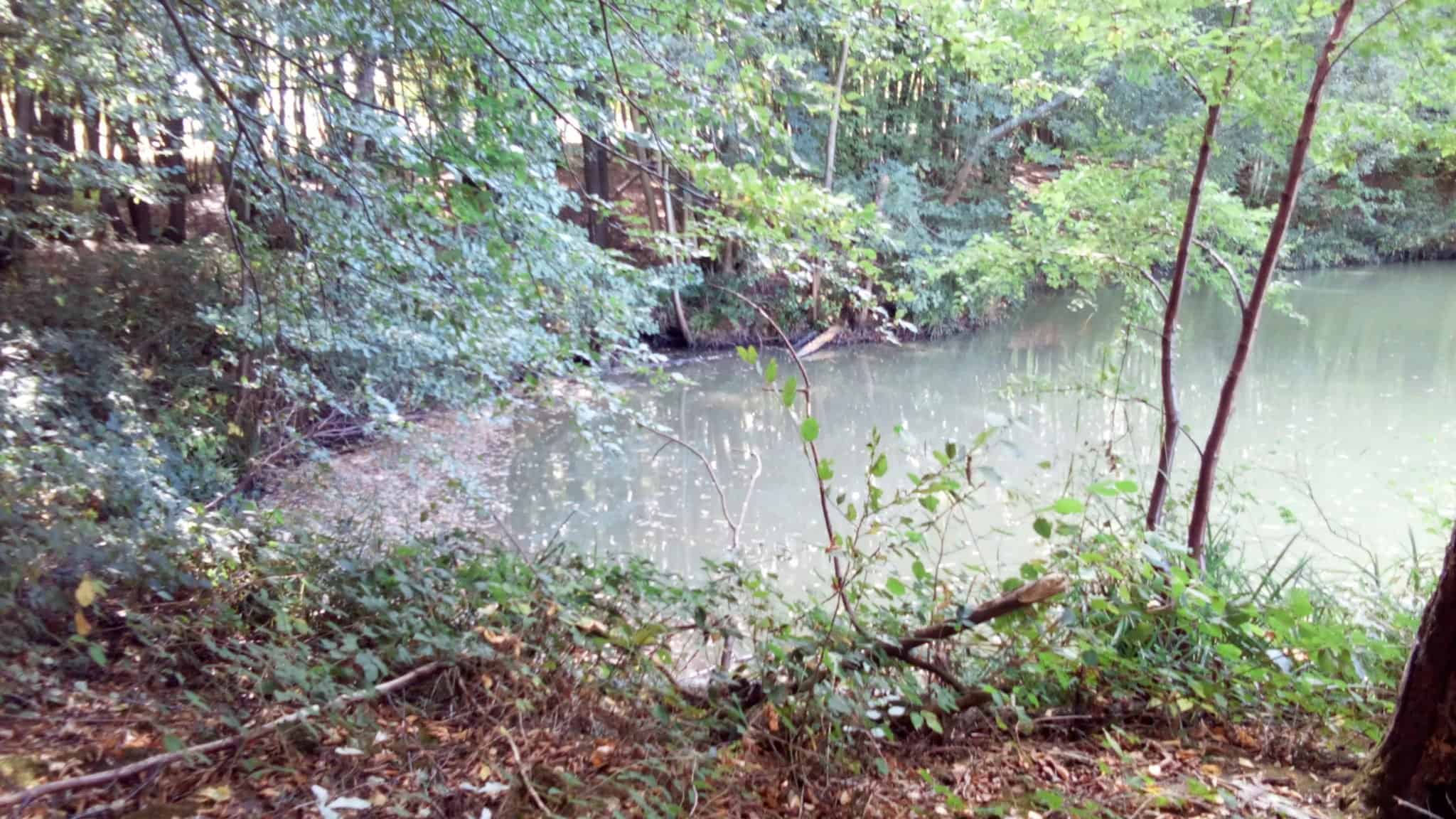When it comes to fishing for large fish in silty waters, such as those in lakes and ponds, the right type of lead is important. For me, I usually start with a flat, pear-type lead clip and thick anti-tangle tubing.
If this doesn’t work, I usually use a helicopter rig system. This type of setup provides better end-tackle performance when fishing on soft silt bottoms.
One of the most important factors that you should consider when it comes to choosing a strong leader for your helicopter rig is its strength. This will allow you to withstand the pressure of the hooklink angle while fishing. Usually, helicopter rig systems perform better when casting long distances.
Since some leads are still stuck in the lake bed after several attempts, I try to find a new lead shape until I can find one that works best. One of the most important factors to consider is the shape of the lead. Round leads are not good for casting into silt as they tend to cover the surrounding silt, which makes it hard to remove the entire rig. A good shape of the leads is the distance style, which can easily sink into the silt.
How To Stop Leads Plugging Into Silt
One of the most effective ways to solve this issue is by using a PVA bag, which has all the lead, rig components, and bait inside it. This will allow you to keep the entire lot in the bag, which will prevent it from sinking into the bottom. Another tip is to double bag the lead and pinprick it a couple of times to allow some air to escape.
The buoyancy of the bag will allow it to sink into the bottom, ideally on top of the silt. However, you must make sure that the holes in through the PVA bag to prevent the lead from floating on the surface of the water.
If you are having issues with getting a lead out of the silt bed, then consider using a flat, and large-inline lead setup. Although this type of setup may seem crazy for certain situations, it can actually help prevent the entire system from diving into the bed.
If you do try this, make sure that the hook links are made up of braided and slightly longer lines. This method should allow you to have some decent bait presentation if the parts of your rig sink into the bottom.
The Issue With Fishing In Silt
When fishing in the silt, the majority of the time, fish are not interested in the hookbait as they associate the markers with danger. This means that fewer people are casting into the area, which means that fewer fish are being caught.
Many people who are passionate about fishing for carp prefer to fish in hard lakebeds such as clay and gravel. However, there are many advantages to choosing to fish in silt instead. Admittedly, it can be hard to get the presentation right with soft bottom, but there are still more reasons to choose this type of fishing over gravel.
The majority of the time, when it comes to fishing for carp, the fish are most likely to find food in the silt. This is because the water is filled with a good head of natural food. If you are planning on fishing in the silt, carefully consider its condition.
One of the most common natural food sources that the fish will find in the silt is bloodworm. This is because it can provide them with a lot of food. If you are planning on fishing in the area where bloodworm beds are located, then you will most likely get some action.
One of the most important factors that all anglers need to consider when it comes to fishing in the silt is that it is not as thick as it seems. The particles of the silt are incredibly lightweight, and when the fish are moving around, they can easily get disturbed. Never assume that the lead won’t penetrate into a glassy layer of silt because this is untrue.
According to Rob Hughes, a diver for CARPology, the tests that they conducted during their time in the water revealed that the clean gravel that they were using was actually covered in a layer of weed and silt. If you are still unsure about the depth of the gravel that you are using, make sure that you lengthen the hooklink to make sure that it is perfect.
How To Find Pockets of Silt
Like other lakebeds, there is never a single type of silt that you can find in the water. Also, there is never a consistency or type of silt that you can use. When it comes to fishing for carp, the fish are most likely to find food in the silt. However, if you use the wrong type of silt, it will not provide the fish with the necessary nutrients.
However, if you are planning on using a marker rod, make sure that you are fishing on the right type of silt. One of the most important factors that you need to consider when it comes to fishing in the silt is finding areas that are very clean and have plenty of leaf litter. These areas are the ones that are usually the most productive and attract the most natural food.
Silt to Avoid
Using a marker is very easy to distinguish between the less desirable types of silt and the more desirable types. When you pull back on bad silt, you will often notice that its stickiness appears as the lead is penetrating the lakebed’s leafy and smelly surface.
After retrieving your marker from the areas where you have been fishing, you will most likely notice that the lead that you are using has picked up black leaf litter. This type of litter has a very unpleasant and pungent odor and is the kind of area that you need to avoid.
Silt to Fish On
The easier it is to determine which type of silt you are using, the better it is compared to the smellier stuff. When you retrieve your marker from the area where you have been fishing, you will often notice that the lead is less sticky and it is easier to glide across. This shows that the area is much cleaner.
When you retrieve your marker and lead from the areas where you have been fishing, you will notice that there is a significantly less amount of leaf litter. When you look at the debris that you have retrieved, you will often find that it has a pleasant smell. You can also pick up various small insects, such as bloodworm.

How to Spot Carp Feeding on Silt
When the fish are feeding in the silt, the bubbles and debris that are produced will often rise to the surface and give the location of the feeding fish away. Also, when there is leaf litter and debris around, these will often get dragged along with the other silt particles.
The water in shallow and clearer waters tends to look a lot darker and dirtier due to the way the light silt particles are kicked up into the water column.
Feeding deep in the silt can lead to the accumulation of large amounts of silt in the gill rakers of the fish. To get rid of this, the fish will often head and shoulder themselves as they feed.
What Rigs to Use on Silt for Carp Fishing
After you have found the ideal type of silt that you are going to use, it’s time to start thinking about the components that will be needed to make your fishing more successful.
One of the most important factors that you need to consider when it comes to fishing in silt is the size and set-up of your lead. This will determine how far it will sink into the water. Having the right size and set-up will allow you to make the most of your fishing.
There are two main types of hooks that can be used in this situation: bottom and pop-up. If you find a lot of debris around the area, then you might want to use a pop-up bait to keep the presentation of your hook free of any buildup. On the other hand, if the water is clear and there are traces of natural food, then you might want to use a bottom bait.
One of the most effective ways to improve the presentation of your bait is by carefully balancing it. This will allow you to make it sink slower and stay clear of the silt. This will allow you to get the fish to eat the bait much easier.
One of the most important factors that you need to consider when it comes to fishing in soft stuff is the type of lead that you are going to use. The lighter the lead, the less it will sink into the silt. One of the most effective shapes that you can use is the dumpy pear. Another popular choice is the zip-lead style.
Most lead systems are not suitable for fishing in soft stuff because the rig will often follow it to the bottom. One system that is ideal for this type of situation is the helicopter set-up. This allows the hook to slide up the leader out of the way of the soft bottom.
Hooklinks are also important for this type of fishing as they tend to stick up if the lead gets into the lakebed. A soft-coated material such as the Easy Strip Hooklink from Solar is a great choice. A braided version of the same material is also a good candidate.
In Summary
The various factors that you need to consider when it comes to fishing in soft stuff are listed below. Although the bottom of your lake may feel hard, it will still have a layer of silt on top. One of the most important types of silt that you should be targeting is the glassy type.
You should avoid using heavy, round boilies as they will sink into the silt. Instead, try using lighter baits. Also, keep in mind that you can’t use an in-line set-up. Rigs should never be used with an in-line setup. Ideally, you should also lengthen your hooklink by at least two inches.
I have made a lot of mistakes during my fishing sessions and don’t want you to make the same mistakes. I’ve learned the hard way over 20 years of fishing most weekends, testing, tweaking, and testing again and now want to help you excel with your carp fishing.
If you need any help, you can reach me at Fishing Again’s Facebook page











